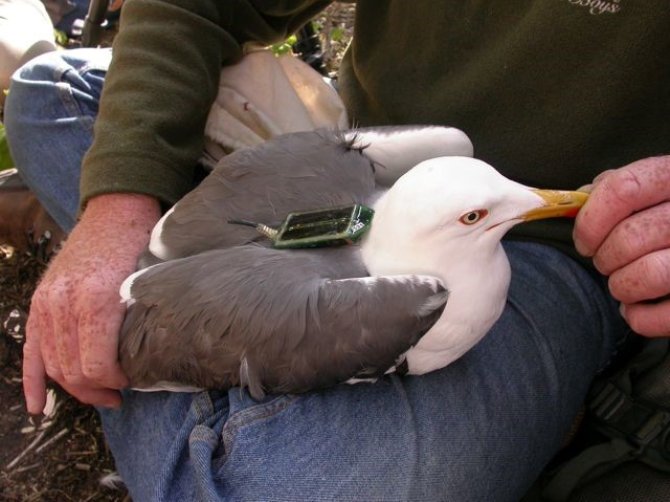
Impact story
Behavioural study of lesser black-backed gull helps to map the number of victims in wind farms
Can a mathematical model map the flight behaviour of the lesser black-backed gull at sea? Wageningen Marine Research is taking steps to develop such a model, together with Bureau Waardenburg and the University of Amsterdam. The results should provide Rijkswaterstaat with insight into the number of collision victims among lesser black-backed gulls in offshore wind farms.
Some species of seabirds collide with wind turbines at sea. Other bird species avoid wind farms, thus reducing their habitat. Estimating the mortality of seabirds due to collisions with wind turbines is done with the help of models, because it is difficult to observe collisions at sea directly.
Towards a better assessment of collision risks
The models that estimate the collisions between birds and wind turbines are usually based on a very rough estimate of the number of birds that actually fly through an area with wind turbines. With their new modelling approach, the researchers hope to provide better estimates of the collision probabilities of seabirds with wind turbines. According to researcher Floor Soudijn, the lesser black-backed gull is a very suitable species for this project because much is known about this seabird and extensive behavioural studies have already been carried out.

Reading out data to make a model
GPS loggers, which the birds can carry with them for a long time, register detailed information about lesser black-backed gulls from the Dutch and Belgian breeding colonies around the North Sea. Via the receiving stations in the breeding colonies, data such as GPS positions, flight altitudes and speeds are recorded. The researchers could use the collected data for almost 160 birds in the period 2010 to 2020 to create a model that mimics the behaviour of the gulls in the North Sea. With this model, predictions can then be made of the movements at sea of lesser black-backed gulls that breed along the coast in the Netherlands and Belgium. The model also predicts how often lesser black-backed gulls at sea end up in areas with windmills, and how often they fly into windmills at sea.

Is the behaviour of seagulls predictable?
The most important question for the researchers at this time is whether the behaviour of the gulls can actually be captured in a model. Each individual lesser black-backed gull seems to have its own way of doing things. "The gulls often do unexpected things. In addition, gulls make very individual choices; one gull prefers to eat fish at sea, while another likes to go ashore to scavenge in the rubbish", says Soudijn. The research is therefore still in progress.
The research results will be derived from research carried out within the Wind at Sea Ecological Programme (Wozep).